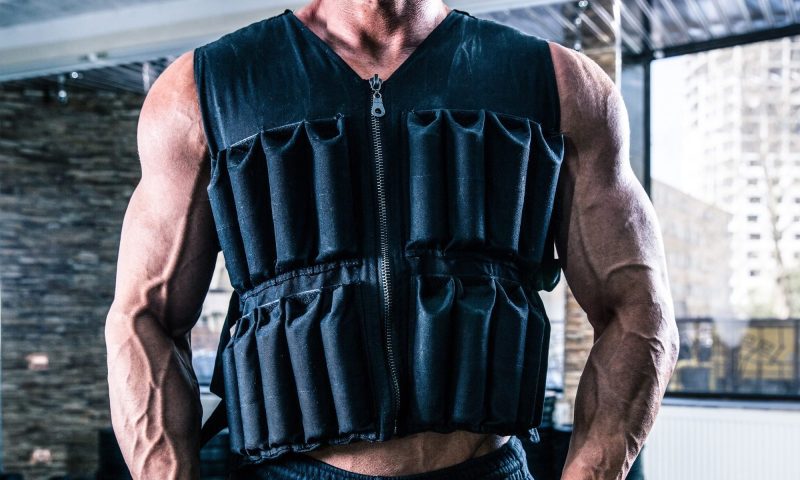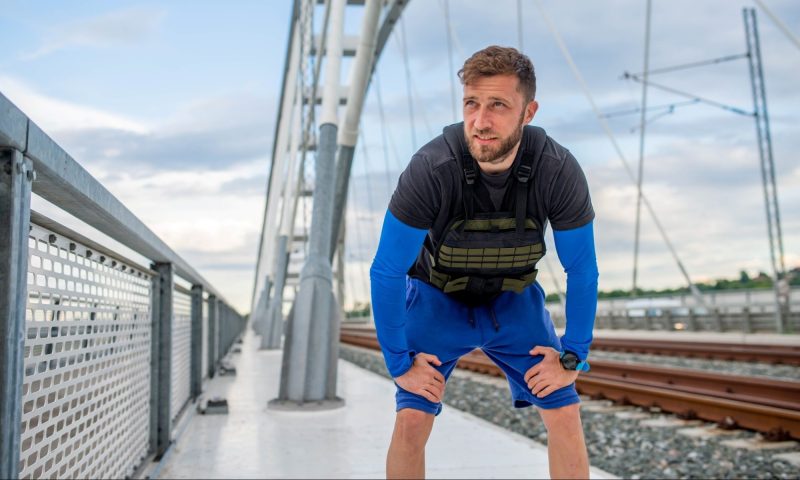You have likely heard about adding extra weight to your body during workouts to burn calories and build muscle. This added weight can show up in numerous ways, from wearing a weighted vest while doing pull-ups to ankle weights during a Pilates class. As a fitness enthusiast myself, I find wearing a vest or heavy backpack while hiking can make quite a difference.
If you are looking to take your workouts up a notch, keep reading to learn about important factors to consider when choosing the best option for you, as well as find out how you stand in the ruck pack vs. weighted vest debate!
Ruck pack vs. weighted vest: What’s the difference?

A ruck pack is a weighted backpack designed to hold plates, sandbags, or other heavy items, and it distributes weight primarily on your upper back and shoulders. Many ruck packs have adjustable straps and padding to enhance load stability, especially while you are walking or hiking.
A weighted vest, on the other hand, is worn close to the torso and spreads weight more evenly across the front and back of the body. Most vests allow for incremental weight adjustment and are secured tightly with straps or velcro.
While both tools add an external load, their effects on body mechanics differ. Ruck packs shift your center of gravity backward slightly, which can impact posture and gait. Weighted vests maintain a more centered load, making them better for dynamic movements like jumping or sprinting. Understanding this basic difference is key before deciding which is best for your workouts.
Which should you choose based on your fitness goals?

If your goal is to build endurance and improve cardiovascular health, a ruck pack is a great option. It’s ideal for long-distance walking, hiking, or low-impact training. The added weight is a simple way to increase your heart rate and muscular stamina without requiring high-intensity movements that some people may want to avoid.
For those focused on strength, power, or high-intensity interval training (HIIT) workouts, a weighted vest is typically the better option. It stays close to the body, making it suitable for bodyweight movements like push-ups, pull-ups, squats, and burpees. You can even run or jump in it without the load shifting around.
Also, if you have a weight loss goal, an NIH study that involved people wearing a weight vest for eight hours a day for three weeks shared that “Increased weight loading reduces body weight and fat mass in obese subjects.”
Overall, ruck packs are great for military-style rucking or those preparing for weighted hikes, while weighted vests are better for athletes wanting to make their functional workouts more challenging. In short, your goals — whether it’s aerobic endurance, muscular strength, or functional fitness — should guide your choice.
What should you expect when it comes to comfort and fit?

Comfort is where the two tools can feel very different. Ruck packs often have padded shoulder straps and adjustable waist or chest belts to improve stability, but they can still cause pressure on your shoulders and upper back during longer sessions.
Weighted vests tend to distribute weight more evenly and come in form-fitting designs that minimize movement. However, they can feel restrictive around the chest and torso, especially during deep breaths or exercises requiring upper-body rotation.
In terms of mobility, vests usually win. Because they hug the body, they allow for more freedom during squats, lunges, and upper-body work. Ruck packs can bounce or shift, making them less ideal for dynamic movement.
Fit matters too. Ruck packs need to be adjusted properly to prevent strain, while weighted vests must be snug to avoid chafing. Trying different models and ensuring proper adjustments is key for avoiding discomfort and maximizing performance.
Practical considerations: Cost, versatility, and everyday use

Ruck packs can range from $80 to over $300, depending on the quality, brand, and weight options. They’re often more rugged and versatile, making them useful for hiking, travel, or carrying gear in everyday life. Some even convert into standard backpacks when weight isn’t needed.
Weighted vests generally cost between $50 and $150, making them the more affordable option. They’re more compact, easier to store, and don’t require additional filler materials like plates or sandbags. However, their use is often limited to workouts and specific movement-based training.
If you want one tool that works for both fitness and everyday utility, a ruck pack might give you more bang for your buck. But if you prioritize space-saving gear and structured workouts, a vest is more convenient.
Also, think about where and how often you’ll train. If you’re outdoors frequently or really enjoy hiking, a ruck pack fits the lifestyle. If you prefer fast-paced, bodyweight-focused workouts, the vest is probably your best bet.
Frequently asked questions

Is rucking with a weighted vest better than a backpack?
Rucking with a weighted vest offers better balance and mobility, but a backpack (ruck pack) is typically more comfortable for longer distances. The backpack distributes weight over your shoulders and hips, reducing strain. The best choice depends on your goals — vests for dynamic movement and packs for endurance and comfort.
Does walking with a weight vest count as rucking?
Walking with a weight vest is similar to rucking but not exactly the same. Rucking specifically involves carrying weight in a backpack, which shifts your center of gravity and engages different muscles. A weight vest distributes load evenly, making it a different, though still effective, form of loaded walking.
Can you build muscle walking with a weighted vest?
Yes, walking with a weighted vest can help build muscle, especially in the legs, glutes, and core. The added resistance increases muscular effort and activates more muscle fibers. While it won’t replace strength training, it’s an effective way to enhance endurance and support muscle maintenance or mild growth.



